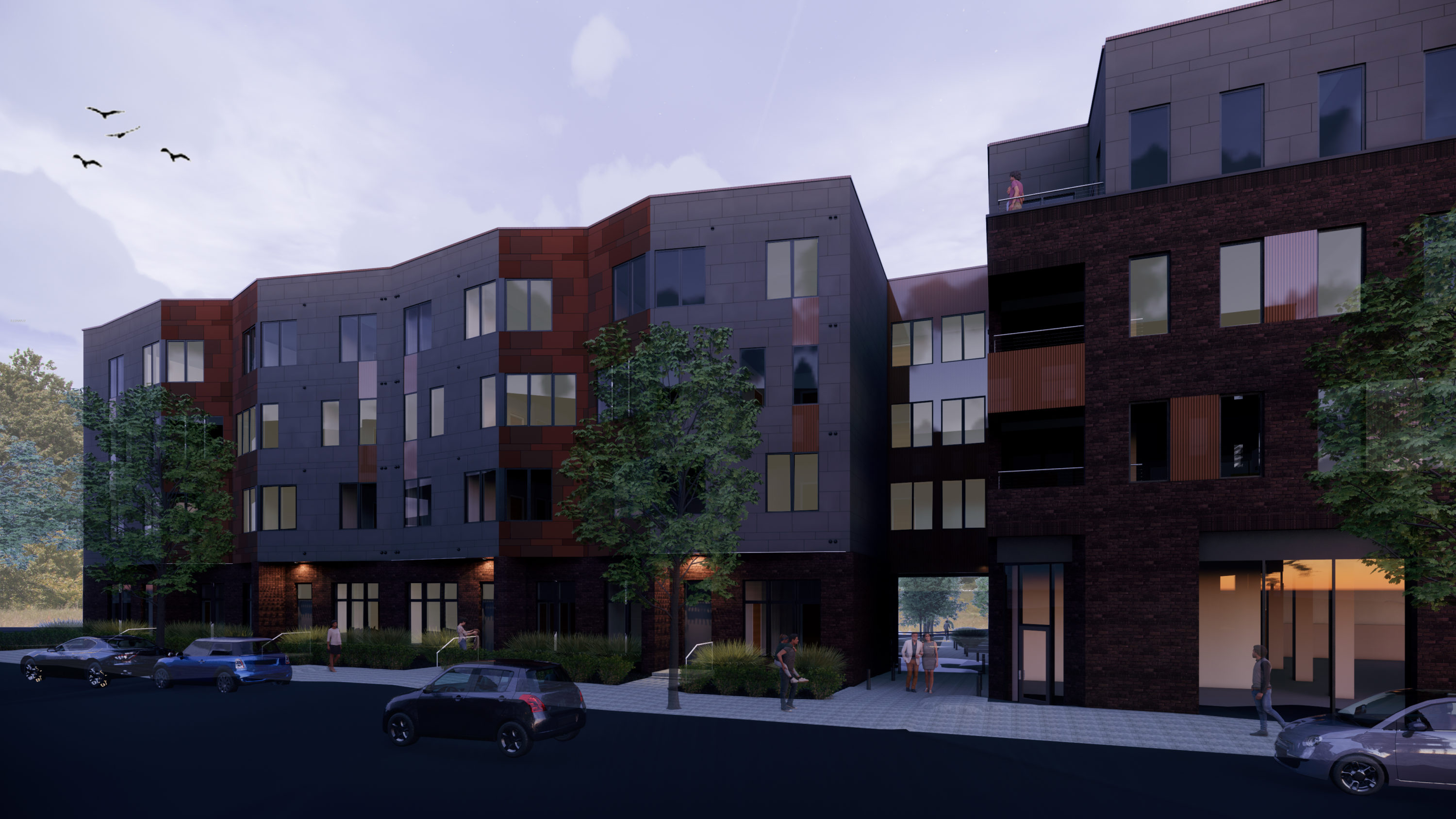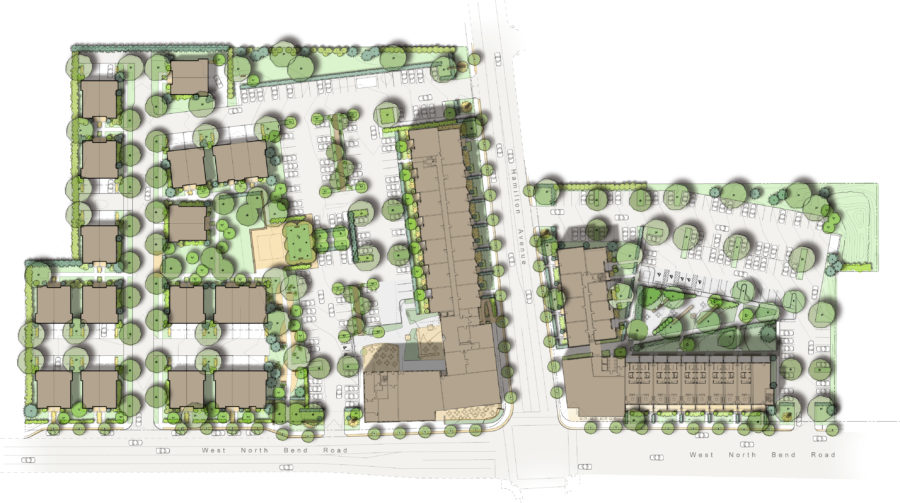News
Sep 4, 2020 _ news
College Hill Station Breaks Ground
Leave it to the College Hill Community to put their unique spin on a groundbreaking. On July 17, a construction caravan of heavy machinery rolled through the neighborhood to kick off College Hill Station, a new mixed-use development at the intersection of Hamilton and North Bend Roads. This site, vacant for over 20 years since the closure of a former grocery store and family restaurants on opposite sides of Hamilton Avenue, has gone through several false starts of redevelopment.
This creative celebration is one of the many reasons people love College Hill—the sense of community pride is palpable. GBBN has been working closely with Philadelphia based developer Pennrose, and College Hill Community Urban Redevelopment Corporation (CHCURC) to infuse the spirit of the neighborhood into the design of College Hill Station.
The project is among the first in Cincinnati to use form-based zoning code (FBC) a new zoning paradigm College Hill has been piloting since 2012 (Madisonville, Walnut Hills, and Westwood are also piloting FBC).
Form-based zoning code is driven by elements—like a building’s form, existing context, and walkability— that make urban neighborhoods distinct and desirable.
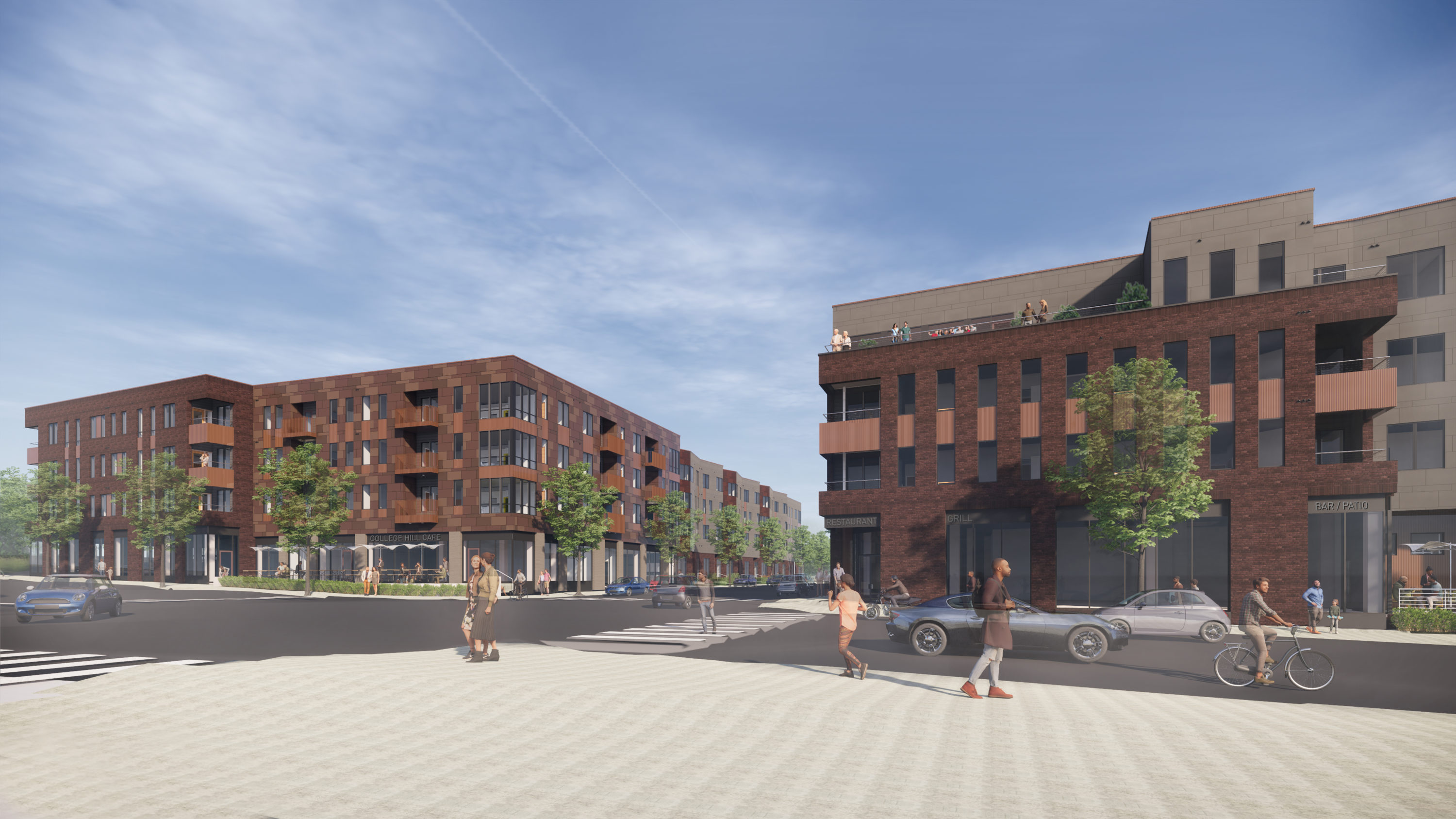
“Not only did we successfully apply the spirit of form-based code to the project, we worked with the city of Cincinnati to creatively flex the parameters to help frame the corner retail uses and target them to the intersection of Hamilton and North Bend,” says GBBN’s Blaise Durio, who is part of the project’s design team.
“Typical zoning would require us to provide more retail space on our site than is healthy for the pace of rejuvenation along College Hill’s business corridor,” he says. “We also used the FBC to create a strategy of providing different unit types that rebuild a housing ladder in College Hill for diverse resident needs, in a neighborhood with little new multi-family development for over 50 years.”
GBBN conducted three community input sessions before any design work started. “One thing that surfaced during these sessions was a strong community desire to attract people to the neighborhood, and provide ways for them to stay in the neighborhood as they move through life’s different stages,” says GBBN’s Stefan Cornelis, who is also part of the design team. “This project provides seventeen different unit types to attract singles, families of different sizes, and empty nesters, including townhomes being developed along an internal street that will be geared toward growing families.
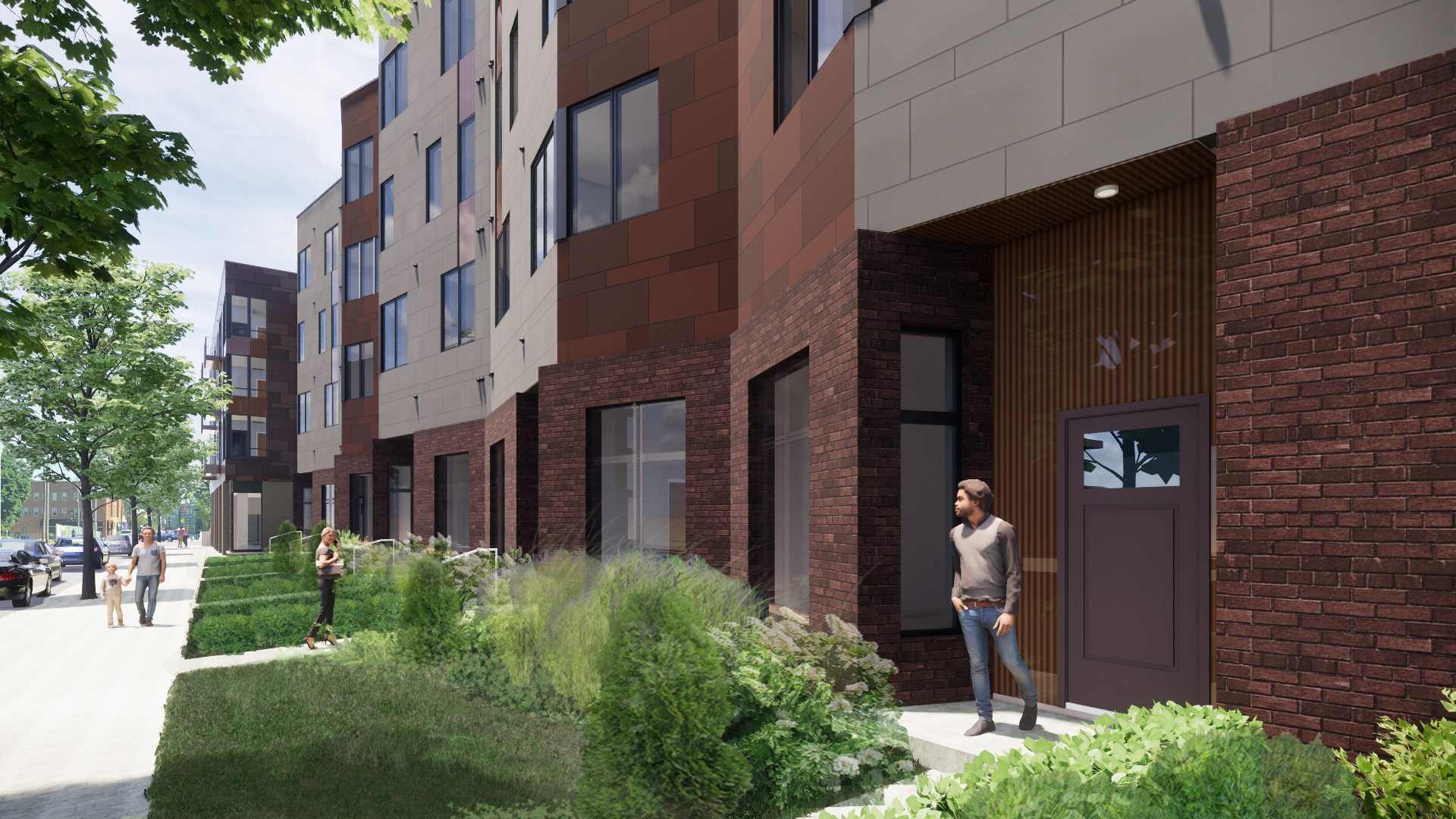
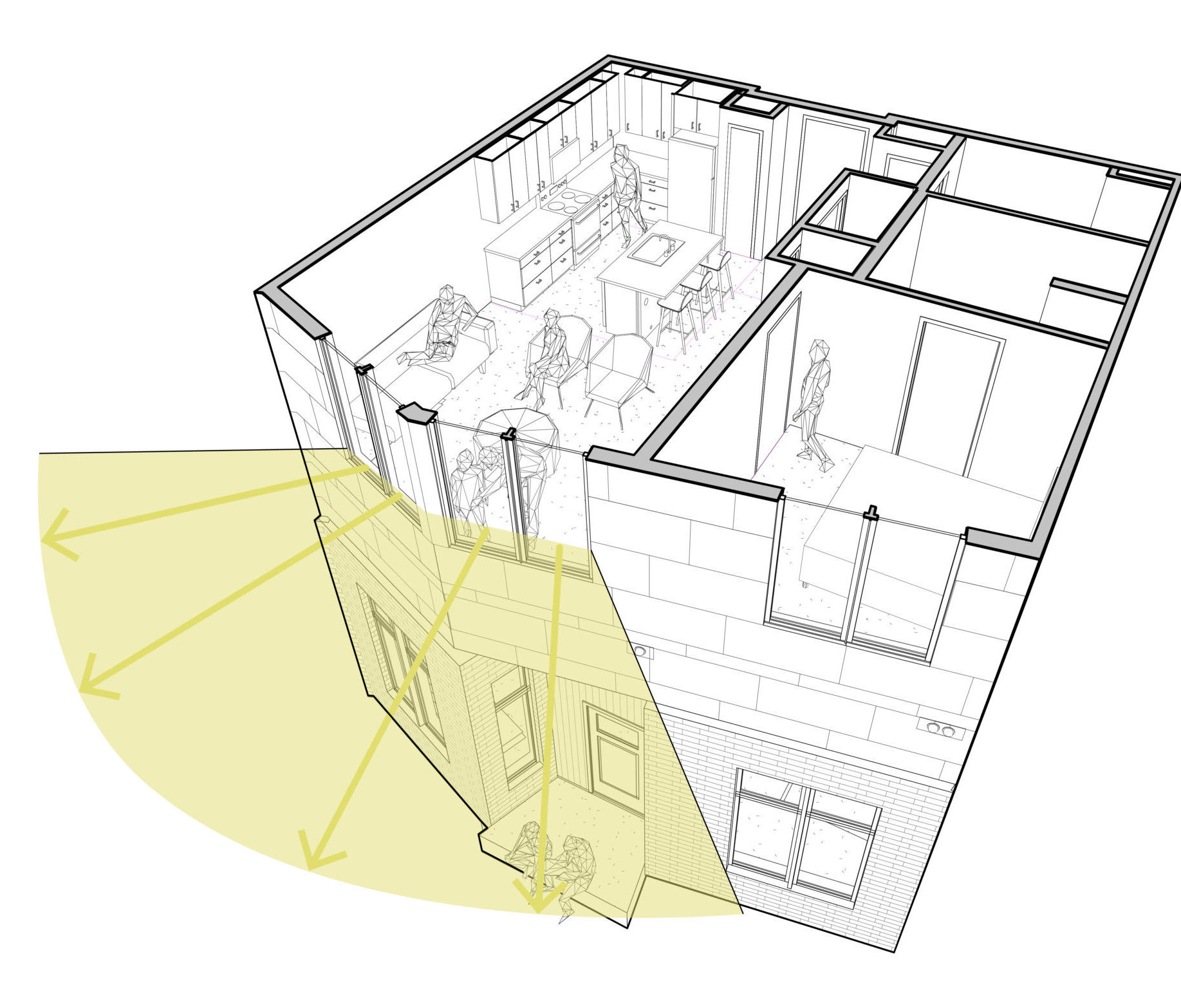
Faceted windows (a contemporary interpretation of a bay window) in street-facing one-bedroom units give residents a broader view of—and connection to—activity on the street.
These “folds” in the façade also break up the length of the development, yet in a way that it still feels like one building. They expose the scale of the units and relate to the smaller buildings in the existing fabric along the business district on Hamilton Avenue in a contemporary way.
The design blurs the line between public and private outdoor space by creating setbacks and raising the first-floor entries by two or three steps at street-level units (below). This creates door stoops and backyards–spaces for residents to hang out and walk-outs that increase activity on the street. By using parking minimums, more greenspace is saved for community use.
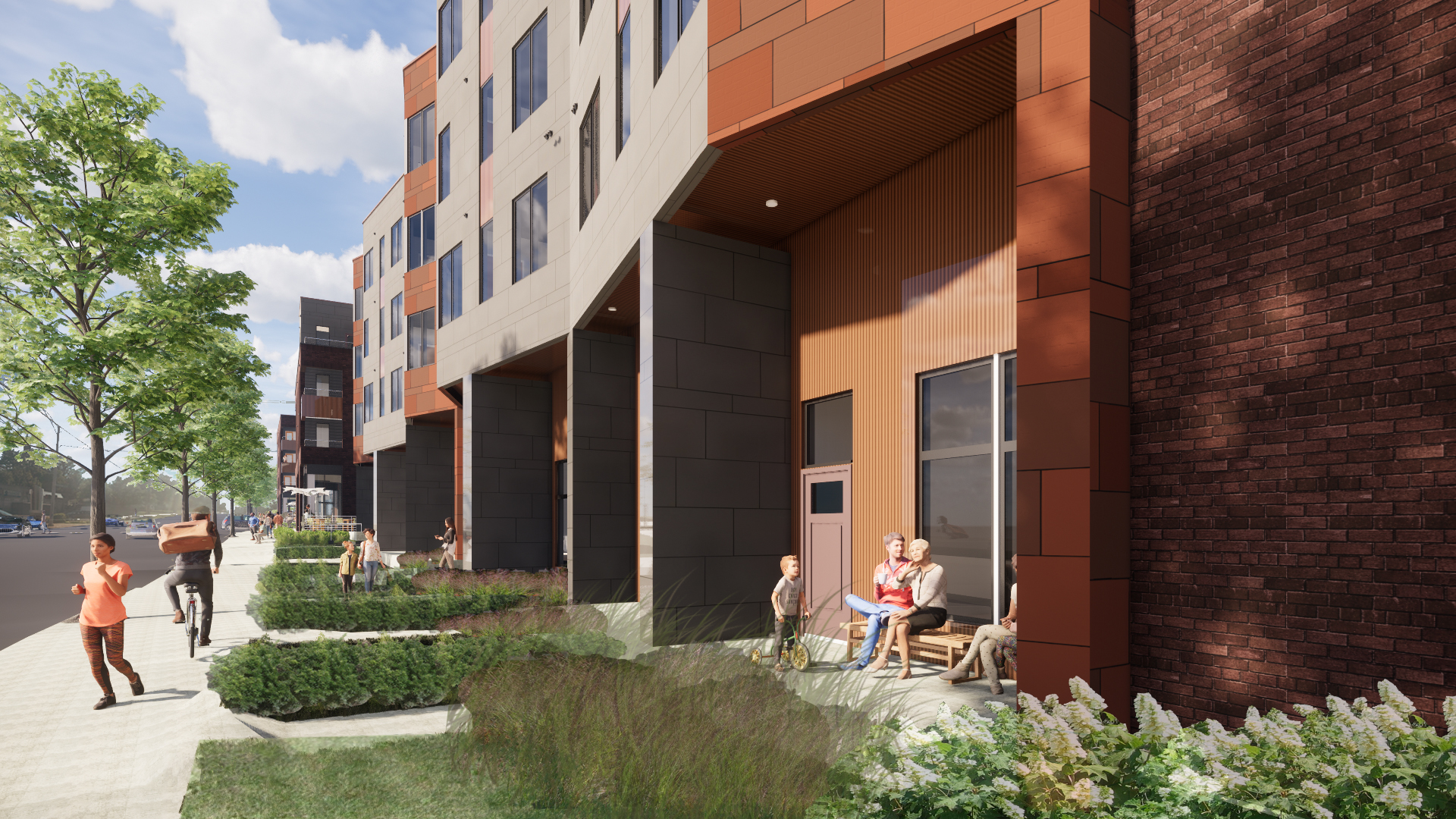 Street-level units
Street-level units
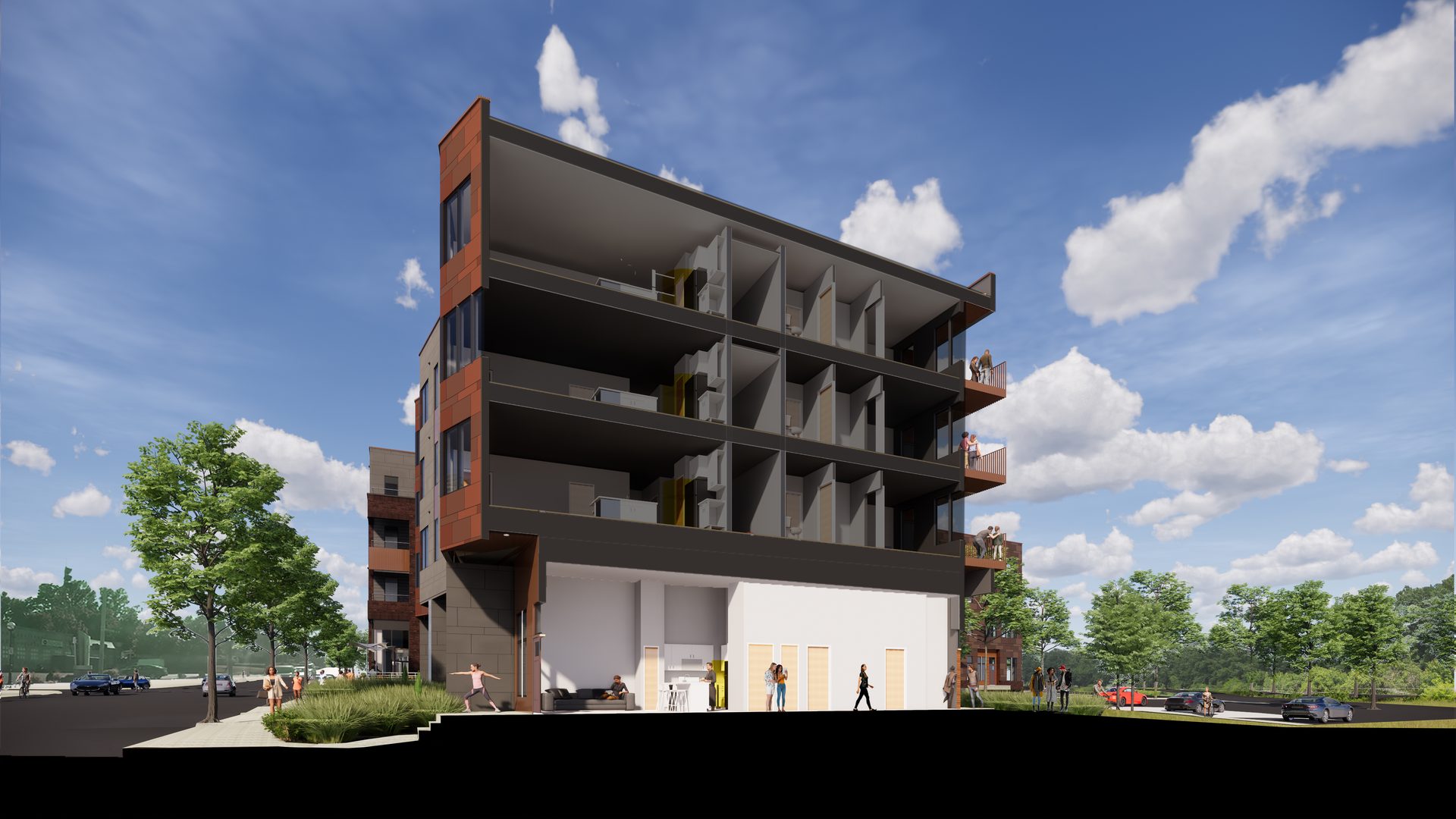 Building Section
Building Section
The project caps the end of the business district to the North and provides a new, welcoming gateway into the walkable main street of College Hill from the East, West and North along North Bend and Hamilton Ave.By the numbers:
- 171 total units
- 17 different unit types including 1- and 2-bedroom units
- All first-floor units have two entry points, most have one from the street and one from an interior hallway
- 7 “thru units” have two street level entries (front and back)
- 43% of the units have at least one balcony or door stoop
- Each of the three retail spaces has an outdoor seating area.
- 96 trees are being planted in the streetscape and spread around the greenspaces behind the buildings in this first phase.
Mike Cappel, president of CHCURC said it best: “College Hill Station is the quintessential story of our neighborhood. Eighteen years of hard work, not only at the corner of Hamilton and North Bend but throughout the entire business district, made it possible.”
